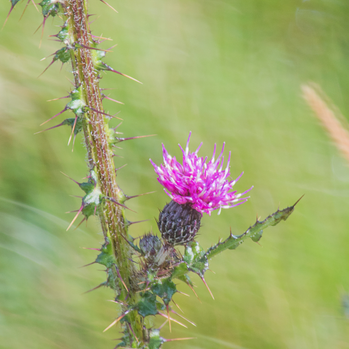Tag Archive for: Weed Control

NCAT Releases Updated Tipsheets on Soil Solarization and Biosolarization
Are you struggling with weeds or pests? Solarization and biosolarization…

Advanced Grazing Series. Session 2: Plants and Grazing Management
In this video, the second session of NCAT's Advanced Grazing…
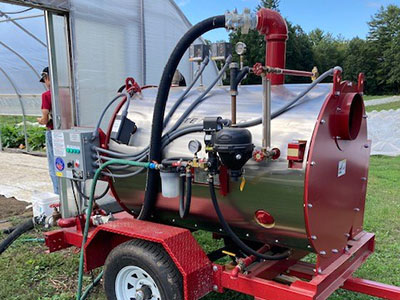
Soil Steaming for Pathogen, Pest, and Weed Control in High Tunnels
Picadilly Farm in southwestern New Hampshire along the Connecticut River includes a large CSA, on-farm store, and deliveries to local restaurants and co-op, keeping owners Bruce and Jenny Wooster very busy. So, finding ways to be more efficient is important, especially in finding appropriate technologies to implement. One technology they've implemented is soil steaming—an emerging technology for managing disease, weeds, and pests in the soil.
By Andy Pressman and Chris Lent, NCAT Sustainable Agriculture Specialists
By Andy Pressman and Chris Lent, NCAT Sustainable Agriculture Specialists
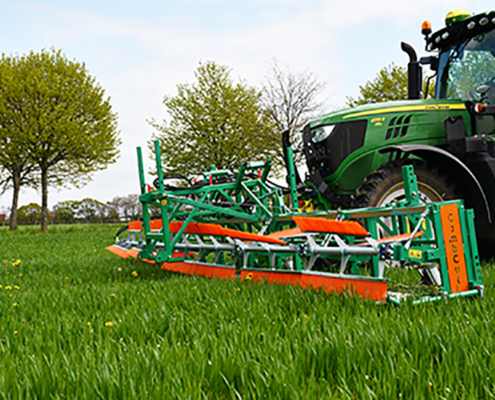
Combcutting: An Innovative Approach for Reducing Broadleaf Weeds in Small Grains
When a small grain crop like wheat, oat, barley, or rye is in the vegetative growth stage and prior to stem development, the crop’s leaves are very flexible. Broadleaf weeds like Canada Thistle growing within the vegetative cash crop generally have a stem, which continues to get thicker and stiffer as the weed matures. Combcutting technology uses a series of stationary knives that are set at a specific angle and distance from each other.
By Justin Morris, Regenerative Livestock Specialist
By Justin Morris, Regenerative Livestock Specialist
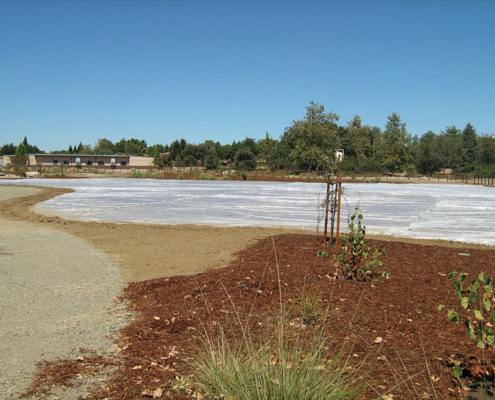
Solarization and Biosolarization: Harnessing the Sun and Organic Matter to Control Weeds
Biosolarization is an innovation in the realm of weed control.…
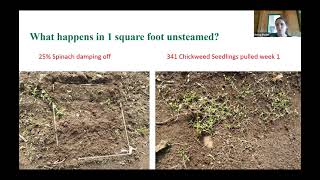
Soil Steaming for High Tunnels
Soil steaming on farms is an emerging technology that is being…

Managing Pests Organically in the Garden and Orchard
Did you combat pests in your garden or orchard this season? Are…

Episode 174. Solarization, Biosolarization, and the Pandemic
In this episode of Voices from the Field, Martin Guerena, a sustainable…
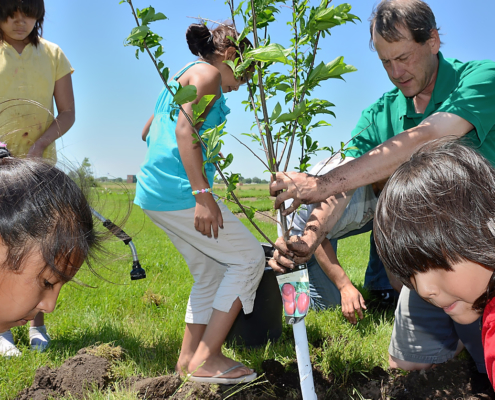 https://attra.ncat.org/wp-content/uploads/2022/03/ND-Comm-Orchard.jpg
837
1200
NCAT IT
/wp-content/uploads/2022/06/ATTRAlogo_RGB-340x156.png
NCAT IT2020-01-28 13:07:152024-01-24 17:03:59Community Orchards
https://attra.ncat.org/wp-content/uploads/2022/03/ND-Comm-Orchard.jpg
837
1200
NCAT IT
/wp-content/uploads/2022/06/ATTRAlogo_RGB-340x156.png
NCAT IT2020-01-28 13:07:152024-01-24 17:03:59Community OrchardsTag Archive for: Weed Control

NCAT Releases Updated Tipsheets on Soil Solarization and Biosolarization
Are you struggling with weeds or pests? Solarization and biosolarization…

Advanced Grazing Series. Session 2: Plants and Grazing Management
In this video, the second session of NCAT's Advanced Grazing…

Soil Steaming for Pathogen, Pest, and Weed Control in High Tunnels
Picadilly Farm in southwestern New Hampshire along the Connecticut River includes a large CSA, on-farm store, and deliveries to local restaurants and co-op, keeping owners Bruce and Jenny Wooster very busy. So, finding ways to be more efficient is important, especially in finding appropriate technologies to implement. One technology they've implemented is soil steaming—an emerging technology for managing disease, weeds, and pests in the soil.
By Andy Pressman and Chris Lent, NCAT Sustainable Agriculture Specialists
By Andy Pressman and Chris Lent, NCAT Sustainable Agriculture Specialists

Combcutting: An Innovative Approach for Reducing Broadleaf Weeds in Small Grains
When a small grain crop like wheat, oat, barley, or rye is in the vegetative growth stage and prior to stem development, the crop’s leaves are very flexible. Broadleaf weeds like Canada Thistle growing within the vegetative cash crop generally have a stem, which continues to get thicker and stiffer as the weed matures. Combcutting technology uses a series of stationary knives that are set at a specific angle and distance from each other.
By Justin Morris, Regenerative Livestock Specialist
By Justin Morris, Regenerative Livestock Specialist

Solarization and Biosolarization: Harnessing the Sun and Organic Matter to Control Weeds
Biosolarization is an innovation in the realm of weed control.…

Soil Steaming for High Tunnels
Soil steaming on farms is an emerging technology that is being…

Managing Pests Organically in the Garden and Orchard
Did you combat pests in your garden or orchard this season? Are…

Episode 174. Solarization, Biosolarization, and the Pandemic
In this episode of Voices from the Field, Martin Guerena, a sustainable…
 https://attra.ncat.org/wp-content/uploads/2022/03/ND-Comm-Orchard.jpg
837
1200
NCAT IT
/wp-content/uploads/2022/06/ATTRAlogo_RGB-340x156.png
NCAT IT2020-01-28 13:07:152024-01-24 17:03:59Community Orchards
https://attra.ncat.org/wp-content/uploads/2022/03/ND-Comm-Orchard.jpg
837
1200
NCAT IT
/wp-content/uploads/2022/06/ATTRAlogo_RGB-340x156.png
NCAT IT2020-01-28 13:07:152024-01-24 17:03:59Community OrchardsTag Archive for: Weed Control

NCAT Releases Updated Tipsheets on Soil Solarization and Biosolarization
Are you struggling with weeds or pests? Solarization and biosolarization…

Advanced Grazing Series. Session 2: Plants and Grazing Management
In this video, the second session of NCAT's Advanced Grazing…

Soil Steaming for Pathogen, Pest, and Weed Control in High Tunnels
Picadilly Farm in southwestern New Hampshire along the Connecticut River includes a large CSA, on-farm store, and deliveries to local restaurants and co-op, keeping owners Bruce and Jenny Wooster very busy. So, finding ways to be more efficient is important, especially in finding appropriate technologies to implement. One technology they've implemented is soil steaming—an emerging technology for managing disease, weeds, and pests in the soil.
By Andy Pressman and Chris Lent, NCAT Sustainable Agriculture Specialists
By Andy Pressman and Chris Lent, NCAT Sustainable Agriculture Specialists

Combcutting: An Innovative Approach for Reducing Broadleaf Weeds in Small Grains
When a small grain crop like wheat, oat, barley, or rye is in the vegetative growth stage and prior to stem development, the crop’s leaves are very flexible. Broadleaf weeds like Canada Thistle growing within the vegetative cash crop generally have a stem, which continues to get thicker and stiffer as the weed matures. Combcutting technology uses a series of stationary knives that are set at a specific angle and distance from each other.
By Justin Morris, Regenerative Livestock Specialist
By Justin Morris, Regenerative Livestock Specialist

Solarization and Biosolarization: Harnessing the Sun and Organic Matter to Control Weeds
Biosolarization is an innovation in the realm of weed control.…

Soil Steaming for High Tunnels
Soil steaming on farms is an emerging technology that is being…

Managing Pests Organically in the Garden and Orchard
Did you combat pests in your garden or orchard this season? Are…

Episode 174. Solarization, Biosolarization, and the Pandemic
In this episode of Voices from the Field, Martin Guerena, a sustainable…
 https://attra.ncat.org/wp-content/uploads/2022/03/ND-Comm-Orchard.jpg
837
1200
NCAT IT
/wp-content/uploads/2022/06/ATTRAlogo_RGB-340x156.png
NCAT IT2020-01-28 13:07:152024-01-24 17:03:59Community Orchards
https://attra.ncat.org/wp-content/uploads/2022/03/ND-Comm-Orchard.jpg
837
1200
NCAT IT
/wp-content/uploads/2022/06/ATTRAlogo_RGB-340x156.png
NCAT IT2020-01-28 13:07:152024-01-24 17:03:59Community Orchards
